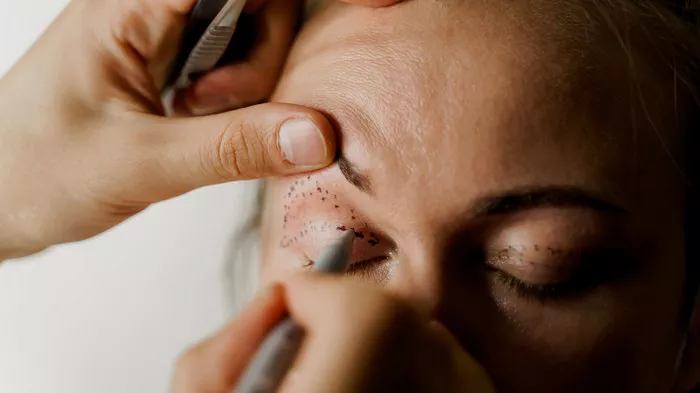Blepharoplasty, commonly known as eyelid surgery, is a popular cosmetic procedure that is designed to improve the appearance of the eyes by removing excess skin and fat from the upper and/or lower eyelids. While the surgery has been around for decades, many people are still concerned about its safety, particularly when it comes to potential complications that may arise.
In this article, we will explore the safety of blepharoplasty, including the risks involved, the factors that can affect the outcome of the surgery, and how to choose a qualified surgeon who can perform the procedure safely and effectively.
Understanding the Risks
As with any surgical procedure, blepharoplasty carries certain risks and potential complications. These risks include bleeding, infection, scarring, vision changes, asymmetry, and more. However, it is important to note that these complications are relatively rare, and the vast majority of patients experience a smooth recovery without issue.
One of the most significant factors that can affect the safety of blepharoplasty is the skill and experience of the surgeon performing the procedure. It is essential to choose a qualified surgeon who has extensive experience in performing blepharoplasty and can provide a detailed consultation to discuss the risks and benefits of the procedure.
Additionally, patients should be forthcoming with their medical history and disclose any underlying health conditions they may have that could increase the risk of complications. For example, individuals with diabetes or high blood pressure may require additional monitoring during and after the surgery to ensure their safety.
Factors Affecting the Outcome of Blepharoplasty
Several factors can affect the outcome of blepharoplasty, including the patient’s age, skin elasticity, and overall health. Older patients with decreased skin elasticity may require additional tissue removal to achieve the desired results, while younger patients may benefit from less invasive procedures such as injectable fillers or laser resurfacing.
Additionally, the specific technique used by the surgeon can also affect the outcome of the procedure. For example, some surgeons prefer to use a transconjunctival approach, which involves making an incision inside the lower eyelid, while others may prefer to make an incision just below the lower lash line.
Choosing a Qualified Surgeon
Choosing a qualified surgeon is perhaps the most crucial aspect of ensuring the safety and effectiveness of blepharoplasty. A skilled and experienced surgeon will have completed extensive training in ophthalmic plastic surgery and can provide a detailed consultation to discuss the patient’s goals, medical history, and potential risks and benefits of the surgery.
When choosing a surgeon, patients should look for board certification from the American Board of Ophthalmology or the American Board of Plastic Surgery. Additionally, patients should ask about the surgeon’s experience with blepharoplasty, including their success rate, complication rate, and before-and-after photos of previous patients.
During the consultation, patients should also ask about the type of anesthesia used during the procedure, as well as the surgeon’s plan for pain management following the surgery. Patients should feel comfortable discussing any concerns or questions they may have with the surgeon and should never feel pressured into undergoing the procedure.
Recovery and Results
Following the procedure, patients may experience some swelling, bruising, and discomfort around the eyes. However, these symptoms typically subside within a few days to a week. The surgeon may prescribe pain medication or recommend cold compresses to help manage any discomfort.
Patients should avoid strenuous activity and heavy lifting for at least two weeks after the procedure to allow the eyes to heal properly. It may take several weeks to several months for the final results of the surgery to become apparent, as the tissues around the eyes continue to settle and heal.
The results of blepharoplasty are long-lasting and can provide a significant improvement in the appearance of the eyes and overall facial aesthetics. Patients often report feeling more confident and self-assured after the procedure, as they feel their eyes look more youthful and refreshed.
In conclusion, blepharoplasty is a safe and effective surgical procedure that can help improve the appearance of the eyelids and overall facial aesthetics. While there are potential risks and complications associated with the surgery, patients can mitigate these risks by choosing a qualified surgeon, disclosing their medical history, and following all pre- and post-operative instructions provided by the surgeon.
If you are interested in undergoing blepharoplasty, it is essential to schedule a consultation with a skilled and experienced surgeon who can assess your candidacy for the procedure and recommend the most appropriate treatment plan. With proper care and attention, blepharoplasty can provide noticeable, long-lasting improvements in the appearance of the eyes and overall facial aesthetics.

